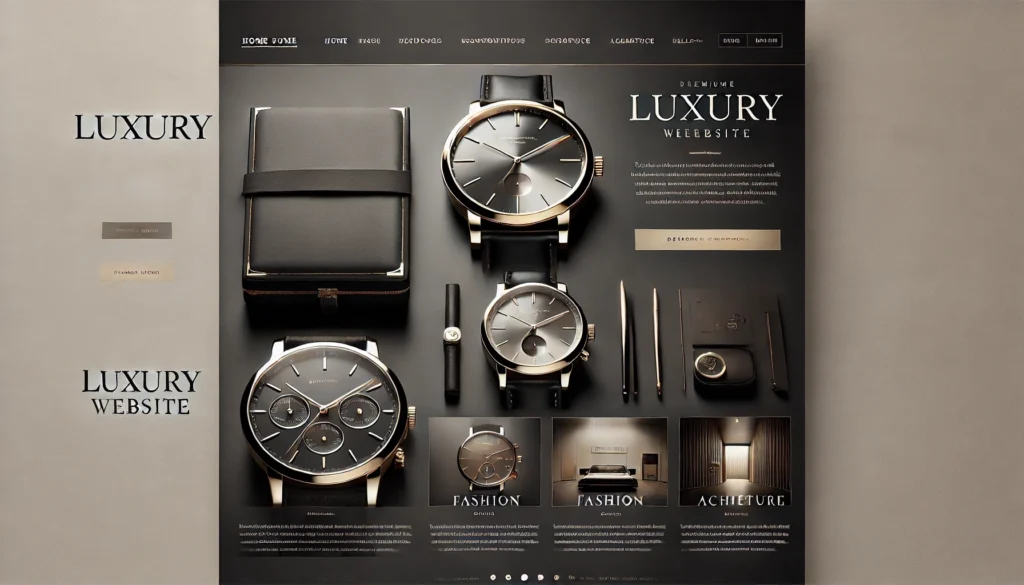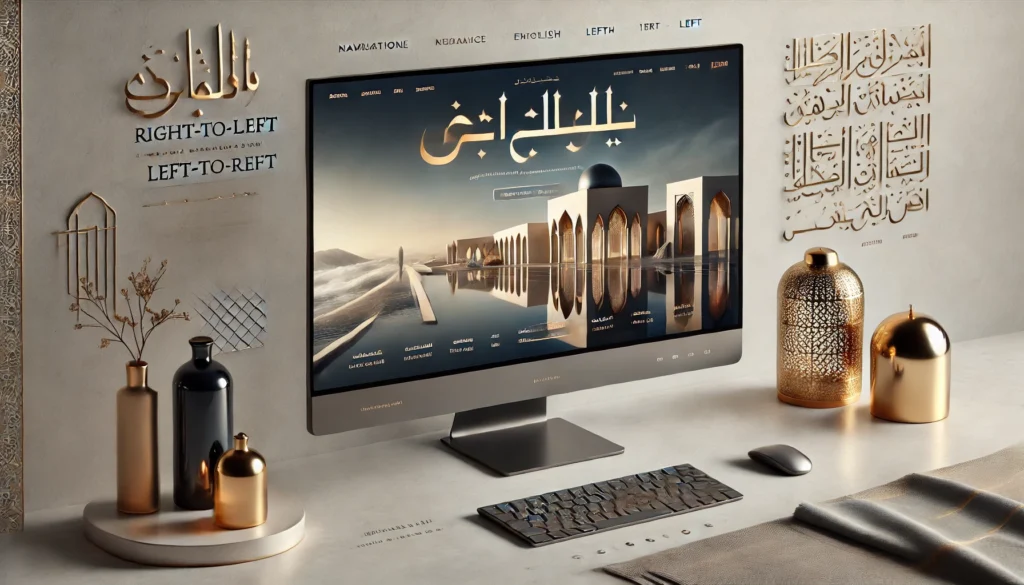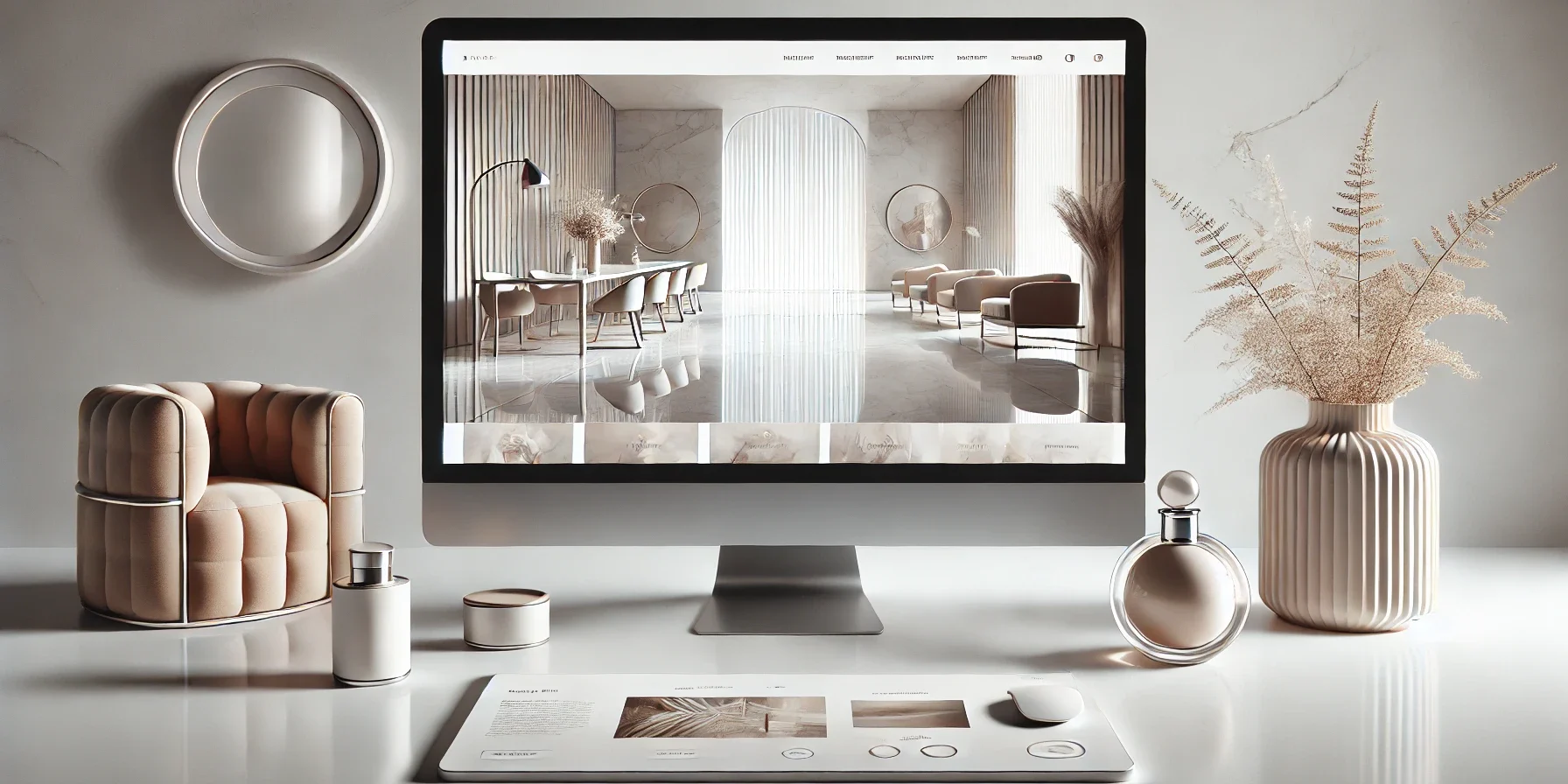Website Design Trends in Dubai: Staying Ahead in a Dynamic Digital Landscape
Dubai has firmly established itself as a global business hub, known for its innovation and rapid technological advancements. In a city where digital presence plays a crucial role in business success, staying updated with website design trends is essential for maintaining a competitive edge. Dubai’s web design industry is shaped by a unique blend of local cultural preferences, cutting-edge technology, and global design influences. As businesses strive to create engaging digital experiences, understanding the latest website design trends in Dubai becomes imperative.
1. Minimalist & Luxury Aesthetics
Why Simplicity Meets Elegance in Dubai’s Web Design
Dubai’s high-end market demands a web design approach that balances minimalism with opulence. Businesses are gravitating toward clean, modern UI designs that reflect sophistication and exclusivity.
Key Elements:
- White Space: Enhancing readability and navigation while exuding a premium feel.
- High-Quality Visuals: Showcasing products and services with crisp, professional imagery.
- Smooth Animations: Subtle motion effects that enhance the user experience without overwhelming the interface.
Luxury brands in Dubai are leveraging this trend to create websites that feel both exclusive and accessible, ensuring they resonate with an elite clientele.

2. AI-Powered Personalization
How AI Enhances User Experience
With digital competition increasing, AI-driven website experiences have become a key differentiator for businesses in Dubai. Companies are utilizing AI technologies to provide seamless and highly personalized interactions.
How AI is Revolutionizing Web Design:
- Chatbots & Virtual Assistants: AI-powered chatbots offer real-time assistance, reducing response times and enhancing customer support.
- Personalized Content Recommendations: Machine learning algorithms analyze user behavior to deliver tailored content and product suggestions.
- Dynamic UI Adjustments: Websites adapt in real-time based on user preferences, ensuring a customized browsing experience.
Many Dubai-based companies, from e-commerce to hospitality, are adopting AI-driven personalization to increase engagement and conversions.
| Feature | Traditional Websites | AI-Powered Websites |
|---|---|---|
| User Experience | Static, same for all visitors | Dynamic, adapts to user behavior |
| Chat Support | Human agents only | AI-powered chatbots available 24/7 |
| Content Suggestions | Generic, predefined | Personalized based on browsing history |
| Navigation | Standard menu-based | Predictive search and adaptive layout |
By embracing AI-powered personalization, Dubai’s businesses can significantly improve customer satisfaction and online engagement.
3. Arabic & Bilingual Web Design
Importance of Language Accessibility
As Dubai continues to establish itself as a global business hub, the demand for Arabic and English bilingual websites is rapidly increasing. Given the city’s diverse population, businesses must ensure their digital platforms cater to both Arabic-speaking locals and the large expatriate community.
The Increasing Demand for Arabic and English Bilingual Websites
Dubai’s multicultural environment makes bilingual websites a necessity rather than an option. Government policies mandate Arabic as the official language, yet English remains dominant in business and commerce. To effectively engage users, websites must support both languages, providing a seamless browsing experience.
Impact of RTL (Right-to-Left) Typography and Cultural Relevance in UI/UX
A crucial aspect of Arabic web design is the Right-to-Left (RTL) text direction. Implementing RTL typography requires careful attention to layout adjustments, typography scaling, and mirroring elements to ensure a natural reading experience. Additionally, cultural relevance—such as appropriate imagery, color schemes, and iconography—plays a vital role in enhancing usability and user trust.
How Localization Improves Engagement for Dubai’s Diverse Audience
Localization goes beyond translation; it involves adapting content to align with cultural nuances, preferences, and search behaviors. Arabic-speaking users may have different navigation habits, so user interfaces (UIs) should be designed with these in mind. By investing in proper localization, businesses in Dubai can significantly improve engagement, conversion rates, and customer retention.

4. Mobile-First & Responsive Design
The Shift Towards Mobile-Dominant Browsing
With one of the highest smartphone penetration rates in the world, Dubai’s digital landscape is mobile-centric. Web design strategies must prioritize mobile usability to cater to the city’s tech-savvy consumers who rely heavily on their smartphones for browsing, shopping, and online services.
Dubai’s High Mobile Penetration Rate and Its Impact on Web Design Strategies
Studies indicate that over 90% of UAE residents use smartphones daily. This shift has transformed web design priorities, requiring businesses to adopt a mobile-first approach. Websites must be optimized for smaller screens, ensuring smooth navigation, easy readability, and touch-friendly interactions.
The Necessity of Fast-Loading, Mobile-Friendly Websites for Better SEO and User Engagement
Slow-loading websites lead to higher bounce rates and lower search rankings. Mobile-first design principles focus on lightweight elements, efficient coding, and image optimization to enhance speed and performance. A responsive design ensures that a website functions seamlessly across different devices, keeping users engaged and improving overall experience.
Google’s Mobile-First Indexing and Why It’s Critical for Dubai-Based Businesses
Google’s Mobile-First Indexing means that the search engine predominantly uses the mobile version of a website for ranking and indexing. For Dubai-based businesses, having a mobile-optimized site is no longer optional—it directly impacts search visibility and online competitiveness. Implementing a responsive, mobile-friendly design is essential for maintaining high rankings and attracting organic traffic.
In the United Arab Emirates, mobile internet usage is pervasive, with a penetration rate of 96.2% as of 2024. This high level of connectivity underscores the critical importance of mobile-first and responsive web design strategies for businesses operating in Dubai.
5. Interactive & Immersive Experiences
The Rise of Engaging UI Elements
In the competitive digital landscape, user engagement is key to retaining visitors and encouraging conversions. The modern web experience is no longer static; it is dynamic, interactive, and immersive. Businesses in Dubai are rapidly adopting engaging UI elements that provide a more captivating experience.
Key Features of Interactive & Immersive UI:
- Scroll-Based Animations: Websites now incorporate animations triggered by user scrolling, making the browsing experience more engaging and visually appealing.
- 3D Visuals: Enhanced graphics and 3D elements add depth and interactivity, allowing users to interact with products virtually.
- Micro-Interactions: Small but effective animations, such as button hovers, page transitions, and loading indicators, contribute to a seamless and enjoyable user journey.
Case Studies: Dubai-Based Brands Using Immersive Storytelling
Dubai is home to brands that thrive on innovation, and many have embraced immersive storytelling and emerging technologies such as VR and AR to create unforgettable digital experiences.
- Emirates Airlines: The airline’s website incorporates 3D seat selection features, providing a virtual walkthrough of the aircraft cabin before booking a ticket.
- Emaar Properties: Emaar’s interactive website showcases real estate projects using 3D visualization, allowing potential buyers to explore properties in detail.
- Expo 2020 Dubai: The official Expo website integrated AR experiences and interactive content to engage visitors in the lead-up to the event.
The Importance of Engagement-Driven Designs
Interactive web design isn’t just about aesthetics—it significantly impacts user retention and bounce rates. The longer users stay engaged, the higher the chances of conversions. Key benefits include:
- Reduced Bounce Rates: Engaging elements encourage visitors to explore more pages rather than exiting immediately.
- Increased Time Spent on Site: Interactive designs keep users engaged longer, boosting session duration.
- Higher Conversion Rates: A well-designed, interactive site can lead to better customer decision-making and increased sales.
Example: A Dubai-based luxury hotel chain implemented an immersive VR tour on its website, allowing users to explore suites and amenities virtually. This led to a 30% increase in direct bookings.
6. Sustainability & Eco-Friendly Web Design
Green Web Design: A Growing Trend in Dubai
Sustainability is no longer just a buzzword; it has become a business imperative. With Dubai’s commitment to environmental responsibility, businesses are implementing sustainable web design practices to reduce their digital carbon footprint and align with eco-conscious branding.
Why Sustainable Web Design Matters
- Energy Efficiency: Websites with large files and heavy scripts consume more energy. Optimizing these aspects reduces the environmental impact.
- Faster Loading Times: Lightweight, sustainable websites improve page speed, enhancing user experience and SEO rankings.
- Brand Reputation: Consumers are increasingly drawn to businesses that prioritize sustainability. An eco-friendly website reflects a brand’s commitment to environmental responsibility.
How Dubai’s Focus on Eco-Conscious Branding Influences Digital Presence
Dubai has introduced several sustainability initiatives, including the Dubai Clean Energy Strategy 2050, which influences businesses to adopt greener practices. Companies are incorporating sustainability into their digital presence by:
- Using eco-friendly hosting services powered by renewable energy.
- Optimizing websites for energy-efficient performance through lightweight coding.
- Reducing reliance on resource-heavy elements such as autoplay videos and high-resolution images.
Best Practices for Sustainable Website Design
Checklist for an Eco-Friendly Website: ✅ Choose Green Hosting: Opt for web hosting providers that use renewable energy sources. ✅ Optimize Images and Videos: Compress media files to reduce loading times and energy consumption. ✅ Implement Efficient Coding Practices: Use clean code and minimize unnecessary scripts to improve website speed. ✅ Enable Caching and Lazy Loading: Reduce the number of requests to the server to improve performance. ✅ Adopt Dark Mode and Low-Impact Color Schemes: Dark mode reduces energy consumption on OLED screens. ✅ Encourage Minimalist Design: Avoid excessive animations and large files that require more power to load. ✅ Use Sustainable Web Fonts: Choose efficient font formats that reduce HTTP requests.
Dubai businesses leading the sustainability charge include Majid Al Futtaim (sustainable e-commerce initiatives) and Dubai Municipality (eco-conscious digital solutions).
By adopting sustainable web design, businesses not only contribute to a greener planet but also improve their digital efficiency, reduce costs, and enhance their brand reputation in an eco-conscious market.
7. The Evolution of E-Commerce in Dubai
Dubai has emerged as a global hub for innovation, and its e-commerce sector is no exception. With a tech-savvy population and increasing internet penetration, businesses are leveraging cutting-edge web design strategies to enhance user experience (UX) and streamline the online shopping process. One of the most significant advancements in this domain is the development of seamless checkout experiences, which play a crucial role in driving conversions and customer satisfaction.
Growth of Seamless, User-Friendly E-Commerce Interfaces
User experience is at the heart of Dubai’s thriving e-commerce landscape. Businesses are focusing on:
- Mobile-First Design: With a high percentage of online shoppers using smartphones, e-commerce platforms prioritize mobile-friendly interfaces.
- Minimalist Layouts: Clean and intuitive navigation enhances customer engagement and reduces bounce rates.
- AI-Powered Recommendations: Personalized product suggestions based on user behavior increase the likelihood of purchases.
- Multilingual Support: Given Dubai’s multicultural demographic, offering multiple language options improves accessibility and usability.
The Popularity of One-Click Checkout, Digital Wallets, and BNPL Integrations
Consumers in Dubai seek convenience, and seamless payment solutions are at the forefront of e-commerce innovation.
- One-Click Checkout: Reducing the number of steps in the checkout process eliminates friction and enhances user experience.
- Digital Wallets: The widespread adoption of Apple Pay, Google Pay, and local options like Emirates NBD Pay has transformed online transactions.
- Buy Now, Pay Later (BNPL) Integrations: Services like Tabby and Postpay cater to budget-conscious shoppers by allowing flexible installment payments, boosting conversions and average order values.
The Influence of Dubai’s Booming E-Commerce Sector on UX Trends
Dubai’s dynamic retail landscape has directly influenced UX trends in e-commerce. Some of the most notable trends include:
- Augmented Reality (AR) for Product Previews: Fashion, beauty, and home decor brands incorporate AR to allow customers to visualize products before purchasing.
- Voice Search Optimization: As smart speakers and voice assistants gain traction, e-commerce platforms are optimizing for voice-based search queries.
- AI Chatbots & Virtual Assistants: Automated customer support enhances shopping experiences and resolves queries in real time.
- Hyper-Personalization: Leveraging data analytics and machine learning to deliver tailored shopping experiences for users.
Features of High-Converting E-Commerce Websites in Dubai
| Feature | Benefit |
|---|---|
| Mobile-Optimized Design | Enhances accessibility and usability |
| Fast Load Speed | Reduces cart abandonment rates |
| Secure Payment Gateways | Builds trust with customers |
| Multiple Payment Options | Increases conversion rates |
| One-Click Checkout | Speeds up the purchasing process |
| AI-Powered Personalization | Improves customer engagement |
| Live Chat Support | Enhances user assistance |
| AR Product Previews | Helps users make informed decisions |
| BNPL & Installment Plans | Appeals to budget-conscious buyers |
| Multi-Language Support | Expands audience reach |
Conclusion
Staying ahead in Dubai’s competitive e-commerce market requires businesses to embrace the latest web design and UX trends. A seamless and intuitive online shopping experience enhances customer satisfaction, increases conversions, and drives long-term success. Investing in modern, user-friendly, and localized e-commerce designs is not just an option but a necessity for businesses looking to thrive in this dynamic market.
Looking to revamp your website? Contact a Dubai-based web design expert today!
Frequently Asked Questions
1. What are the key website design trends in Dubai for 2025?
In 2025, Dubai’s website design trends emphasize minimalistic aesthetics, mobile-first designs, and the integration of advanced technologies like AI and VR to enhance user engagement.
2. How does a mobile-first design impact user experience?
A mobile-first design ensures that websites are optimized for mobile devices, providing faster load times and intuitive navigation, which leads to improved user satisfaction and higher engagement rates.
3. Why is incorporating AI and VR important in modern web design?
Integrating AI and VR into web design offers interactive and personalized experiences, keeping users engaged and providing innovative ways to present content, which is becoming increasingly important in Dubai’s competitive digital landscape.
4. How can minimalistic design benefit my website?
A minimalistic design reduces clutter, focuses on essential content, and enhances readability, leading to a more straightforward and enjoyable user experience, which can increase user retention.
5. What role does local culture play in Dubai’s web design trends?
Incorporating elements of local culture, such as Arabic typography and region-specific imagery, into web design helps businesses connect with the local audience, reflecting cultural appreciation and enhancing brand relatability.






